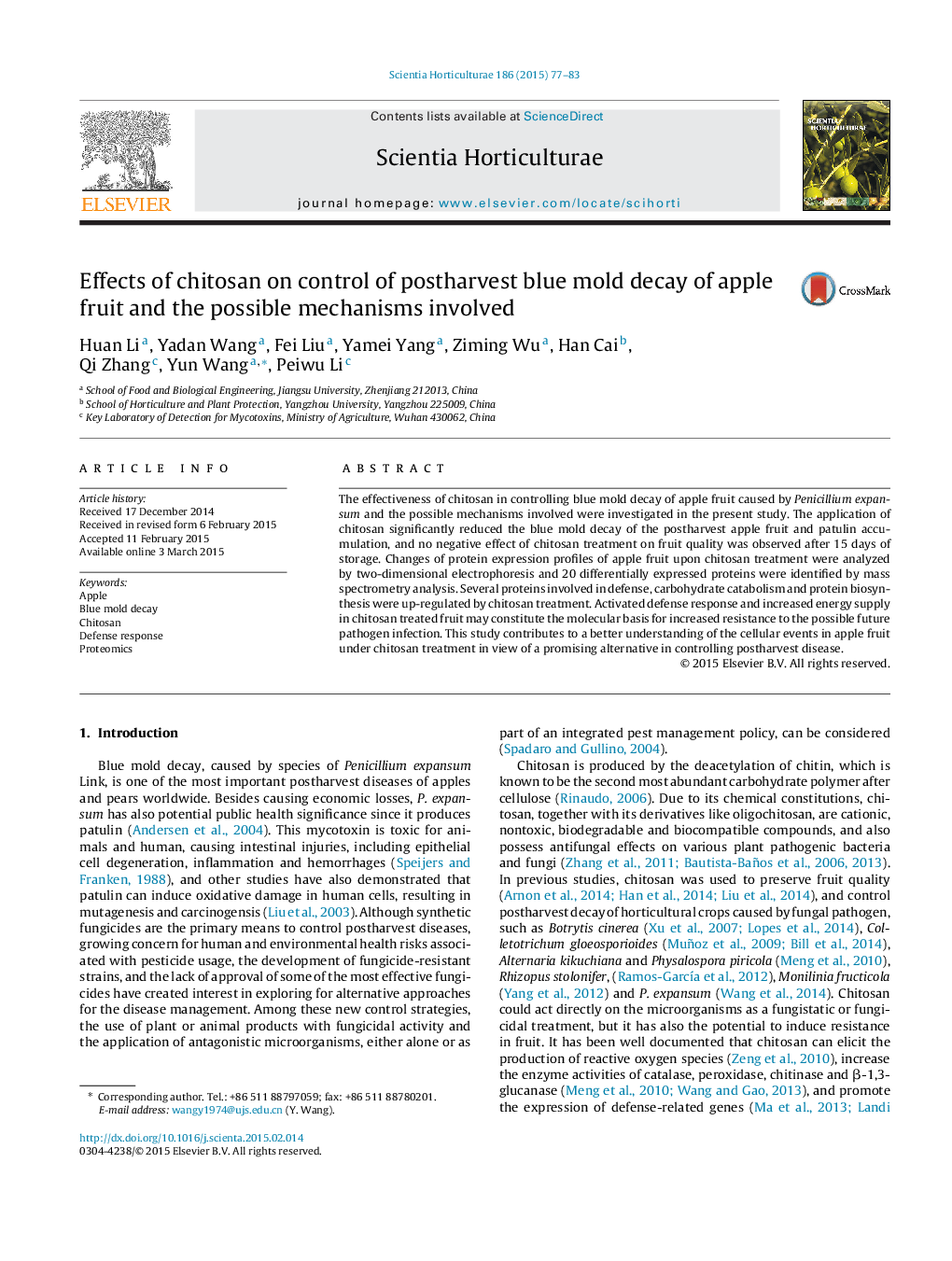| Article ID | Journal | Published Year | Pages | File Type |
|---|---|---|---|---|
| 4566409 | Scientia Horticulturae | 2015 | 7 Pages |
•Chitosan treatment reduced blue mold decay of apple fruit and patulin accumulation.•Twenty chitosan-regulated proteins were identified based on proteomic analysis.•Proteins involved in defense responses were up-regulated by chitosan treatment.•Proteins related to carbohydrate metabolism were induced by chitosan treatment.
The effectiveness of chitosan in controlling blue mold decay of apple fruit caused by Penicillium expansum and the possible mechanisms involved were investigated in the present study. The application of chitosan significantly reduced the blue mold decay of the postharvest apple fruit and patulin accumulation, and no negative effect of chitosan treatment on fruit quality was observed after 15 days of storage. Changes of protein expression profiles of apple fruit upon chitosan treatment were analyzed by two-dimensional electrophoresis and 20 differentially expressed proteins were identified by mass spectrometry analysis. Several proteins involved in defense, carbohydrate catabolism and protein biosynthesis were up-regulated by chitosan treatment. Activated defense response and increased energy supply in chitosan treated fruit may constitute the molecular basis for increased resistance to the possible future pathogen infection. This study contributes to a better understanding of the cellular events in apple fruit under chitosan treatment in view of a promising alternative in controlling postharvest disease.
